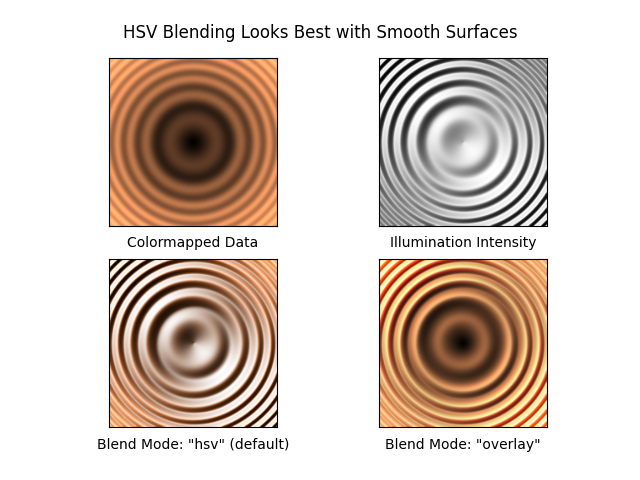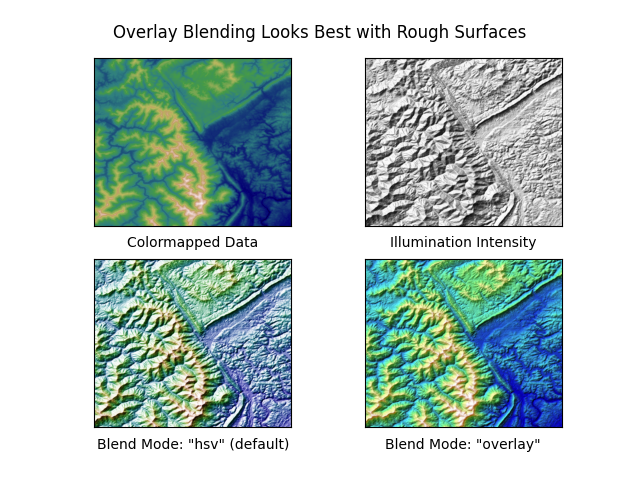ノート
完全なサンプルコードをダウンロードするには、ここをクリックしてください
シェーディングの例#
Mathematicaや Generic Mapping Toolsのような陰影付きレリーフ プロットの作成方法を示す例。
import numpy as np
from matplotlib import cbook
import matplotlib.pyplot as plt
from matplotlib.colors import LightSource
def main():
# Test data
x, y = np.mgrid[-5:5:0.05, -5:5:0.05]
z = 5 * (np.sqrt(x**2 + y**2) + np.sin(x**2 + y**2))
dem = cbook.get_sample_data('jacksboro_fault_dem.npz', np_load=True)
elev = dem['elevation']
fig = compare(z, plt.cm.copper)
fig.suptitle('HSV Blending Looks Best with Smooth Surfaces', y=0.95)
fig = compare(elev, plt.cm.gist_earth, ve=0.05)
fig.suptitle('Overlay Blending Looks Best with Rough Surfaces', y=0.95)
plt.show()
def compare(z, cmap, ve=1):
# Create subplots and hide ticks
fig, axs = plt.subplots(ncols=2, nrows=2)
for ax in axs.flat:
ax.set(xticks=[], yticks=[])
# Illuminate the scene from the northwest
ls = LightSource(azdeg=315, altdeg=45)
axs[0, 0].imshow(z, cmap=cmap)
axs[0, 0].set(xlabel='Colormapped Data')
axs[0, 1].imshow(ls.hillshade(z, vert_exag=ve), cmap='gray')
axs[0, 1].set(xlabel='Illumination Intensity')
rgb = ls.shade(z, cmap=cmap, vert_exag=ve, blend_mode='hsv')
axs[1, 0].imshow(rgb)
axs[1, 0].set(xlabel='Blend Mode: "hsv" (default)')
rgb = ls.shade(z, cmap=cmap, vert_exag=ve, blend_mode='overlay')
axs[1, 1].imshow(rgb)
axs[1, 1].set(xlabel='Blend Mode: "overlay"')
return fig
if __name__ == '__main__':
main()
参考文献
この例では、次の関数、メソッド、クラス、およびモジュールの使用が示されています。
スクリプトの合計実行時間: ( 0 分 1.547 秒)

